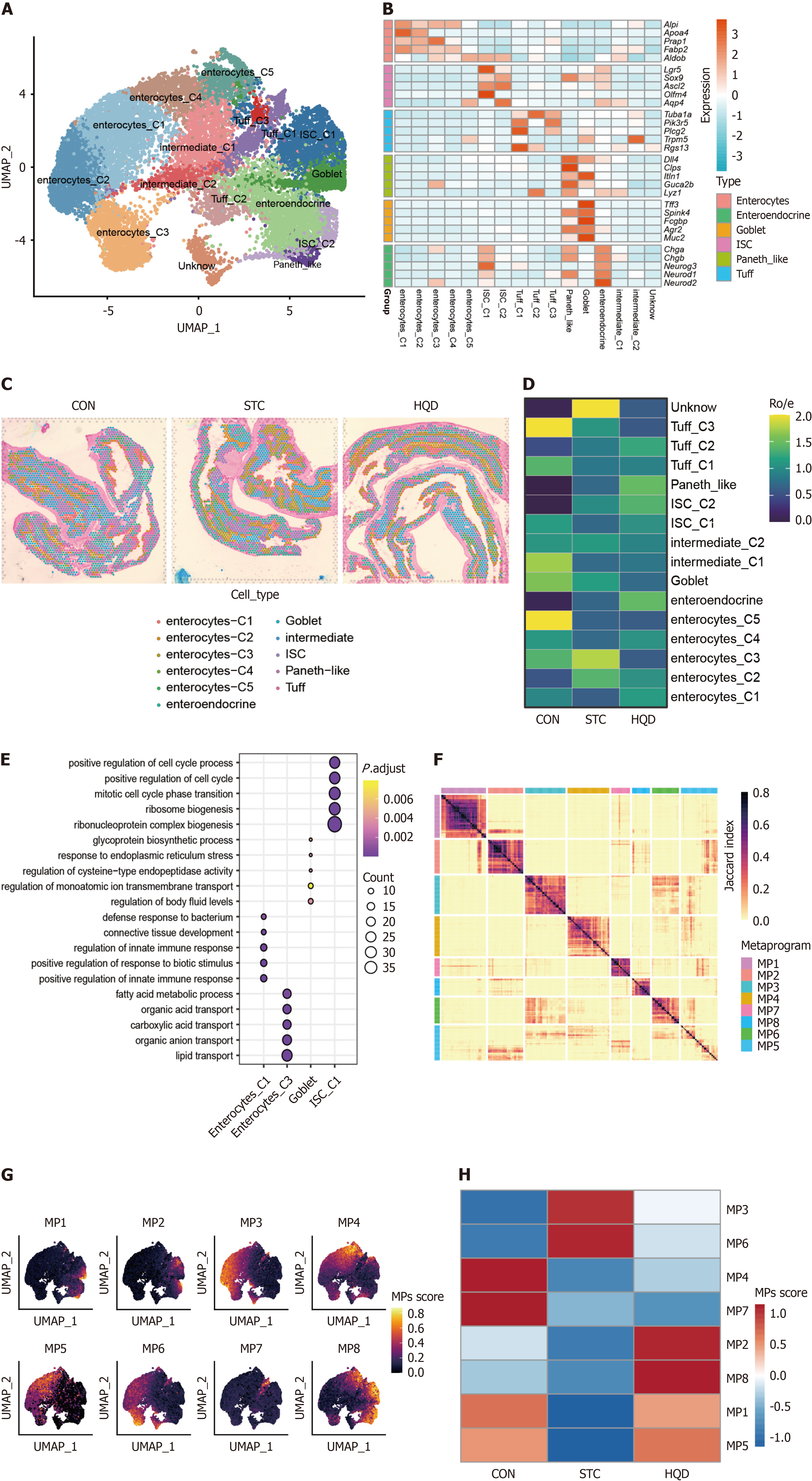Copyright
©The Author(s) 2025.
World J Gastrointest Surg. May 27, 2025; 17(5): 106000
Published online May 27, 2025. doi: 10.4240/wjgs.v17.i5.106000
Published online May 27, 2025. doi: 10.4240/wjgs.v17.i5.106000
Figure 3 The protective effects of Huangqi decoction on the colon mucosal epithelium in slow transit constipation mice.
A: Uniform manifold approximation and projection plot of the epithelial cell subtypes; B: The expression of the classical marker genes of epithelial cells; C: The cell distribution of the epithelial subtypes in spatial transcriptome sequencing data. There are three spatial transcriptome sequencing samples from control, slow transit constipation, and Huangqi decoction groups; D: Heatmap shows tissue distribution of epithelial cell subtypes based on single-cell RNA sequencing data. Ro/e denotes the ratio of observed to expected cell number; E: Gene ontology enrichment (biological processes) of the epithelial cell subtypes based on differentially expressed genes; F: Hierarchical clustering of pairwise similarities between non-negative matrix factorization programs identified across from all epithelial cells. Similarities between non-negative matrix factorization programs were quantified by Jaccard index over the programs’ signature genes; G: Uniform manifold approximation and projection plots of epithelial cells colored by the signature scores of each metaprogram; H: The heatmap displays the metaprogram scores of epithelial cells among the control, slow transit constipation, and Huangqi decoction groups. CON: Control group; STC: Group of slow transit constipation model; HQD: Groups of treatment of Huangqi decoction; UMAP: Uniform manifold approximation and projection; ISC: Intestinal stem cells; MP: Metaprogram.
- Citation: Chen HX, Xiao GZ, Yang CX, Zheng YH, Lei MY, Xu H, Ren DL, Huang L, He QL, Lin HC. Huangqi decoction ameliorated intestinal barrier dysfunction via regulating NF-κB signaling pathway in slow transit constipation model mice. World J Gastrointest Surg 2025; 17(5): 106000
- URL: https://www.wjgnet.com/1948-9366/full/v17/i5/106000.htm
- DOI: https://dx.doi.org/10.4240/wjgs.v17.i5.106000









